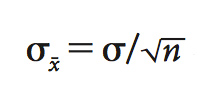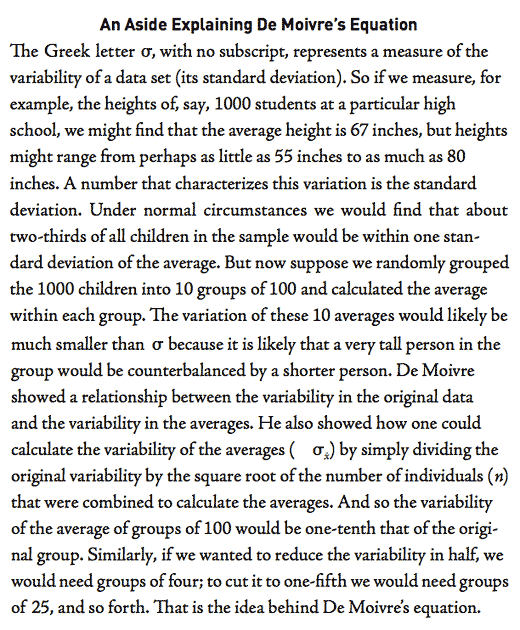photogs

{ A new invention aims to foil paparazzi who try to photograph people who do not wish to be photographed. Celebs are equipped with a flashgun that fires automatically the instant another flashgun fires nearby. | Improbable | full story }
celebs, photogs, technology | June 4th, 2013 6:20 am
photogs, warhol | June 3rd, 2013 9:14 am

Big news from the annals of science last week. A British newspaper reports that the mysteries of the universe may have been solved by a hedge-fund economist who left academia 20 years ago. Eric Weinstein’s theory – he calls it geometric unity – posits a 14-dimensional “observerse”, which contains our work-a-day, four-dimensional, space-time universe.
{ The National | Continue reading | More: Guardian }
photo { Alessandra Celauro }
photogs, theory | May 30th, 2013 12:29 pm

People will lie about their sexual behavior to match cultural expectations about how men or women should act – even though they wouldn’t distort other gender-related behaviors, new research suggests. […] men wanted to be seen as “real men:” the kind who had many partners and a lot of sexual experience. Women, on the other hand, wanted to be seen as having less sexual experience than they actually had, to match what is expected of women.
{ The Ohio State University | Continue reading }
photo { Annemarie Heinrich, Caprichos, 1936 }
photogs, psychology, relationships, sex-oriented | May 28th, 2013 10:55 am

When we age, our brain gradually looses the ability to give birth to new neurons (neurogenesis). This sad decline is linked to impairments in cognitive functions such as learning and memory. The brain, like any other organ, feeds off of nutrients and chemicals in the blood to keep it going. This made researchers wonder: is something in the blood affecting neurogenesis as we age?
To explore this, researchers hooked up the circulation of young and old mice (with young-young & old-old pairing as control) so that their blood intermixed.[…] Several weeks after the surgery, researchers examined the animals’ brains to look for changes in neurogenesis. Young mice, when linked with older mice, had significantly fewer newly born neurons and neural progenitor cells than young-young controls.
{ Neuroxia | Continue reading }
photo { Bill Brandt }
blood, photogs | May 20th, 2013 7:15 am
photogs | May 17th, 2013 4:12 am
hair, photogs | May 2nd, 2013 5:15 am
photogs | April 26th, 2013 1:54 pm
photogs | April 24th, 2013 1:32 pm
photogs | April 23rd, 2013 2:44 pm
photogs, technology | April 22nd, 2013 2:21 pm
brain, photogs | April 5th, 2013 12:00 pm

The U.S. District Court in the Southern District of New York dismissed collector Jonathan Sobel’s lawsuit against photographer William Eggleston. […]
The lawsuit was spurred by Christie’s sale last March of 36 poster-size, digital prints of images that Eggleston had shot in the Mississippi Delta more than 30 years ago. Some were created from negatives he had never printed before, while others were based on iconic works, such as “Memphis (Tricycle).” (Sobel owns a 17-inch version of that photograph, for which he reportedly paid $250,000.) The sale was a massive success — by the time it was over, the large digital works accounted for seven of the artist’s top 10 prices. (The five-foot “Tricycle” came in on top, selling for a record $578,500.)
For Sobel, who owns 190 Eggleston works, the success of the sale was part of the problem. “The commercial value of art is scarcity, and if you make more of something, it becomes less valuable,” he told ARTINFO last April.
The judge disagreed. Egggleston may have profited from the Christie’s sale, she concluded, but not at Sobel’s expense. Eggleston could be held liable only if he created new editions of the limited-edition works in Sobel’s collection using the same dye-transfer process he used for the originals — a move that would directly deflate their value. In this case, however, Eggleston was using a new digital process to produce what she deemed a new body of work.
{ ArtInfo | Continue reading }
art, economics, law, photogs | March 30th, 2013 11:30 am
photogs | March 29th, 2013 8:47 am

People often reject creative ideas, even when espousing creativity as a desired goal. To explain this paradox, we propose that people can hold a bias against creativity that is not necessarily overt and that is activated when people experience a motivation to reduce uncertainty.
{ SAGE | Continue reading | Thanks Tim }
photo { Adam Broomberg & Oliver Chanarin }
ideas, photogs, psychology | March 24th, 2013 3:31 pm
photogs, visual design | March 24th, 2013 3:06 pm

According to the studies he cited, 7 percent of people’s twitter followers are actually spambots; 30 percent of social media users are deceived by spambots and chatbots; and 20 percent of social media users accept friend requests from unknown people, 51 percent of which are not human. […] When it comes to “astroturfing” — the practice of creating fake grassroots movements to influence opinions — the hit ratio on email spams is about 12.5 million to 1. In order to create an astroturf movement on the scale of the anti-SOPA movement in 2011, every person on earth would have to receive the same spam message 8 times.
{ Gigaom | Continue reading }
photo { Todd Fisher }
photogs, scams and heists, social networks, technology | March 23rd, 2013 3:08 am

It seems to me that MFA programs have become a tool of indoctrination that has had an unprecedented homogenizing effect on artistic practices worldwide, an effect that is now being replicated with curatorial and critical writing programs. […]
The market of art is not merely a bunch of dealers and cigar-smoking connoisseurs trading exquisite objects for money behind closed doors. Rather, it is a vast and complex international industry of overlapping institutions which jointly produce artworks’ economic value and support a wide range of activities and occupations including training, research, development, production, display, documentation, criticism, marketing, promotion, financing, historicizing, publishing, and so forth. The standardization of art greatly simplifies all of these transactions. For a few years now I have experienced a certain sense of déjà vu while walking through art fairs or biennials, a feeling that many other people have also commented on: that we have already seen all these works that are supposedly brand new. We are experiencing the impact of contemporary art as a globally traded commodity that is produced, displayed, and circulated by an industry of specially trained professionals. […] This is not a new observation: I think Marcel Duchamp already fully understood this danger a hundred year ago. […]
Today it would be rather futile to try to reconstitute bohemia—the free-flowing, organic creative space—because it never really existed within the constellation of institutions of art, the art market, and the art academy. If Warhol’s Factory was an entry into art that enabled a group of people of very different backgrounds to enter a certain kind of productive modality (both within and in spite of the surrounding economy), it was a space of free play that no longer exists. Instead, what we have now are MFA programs: a standardization not even of bohemia, but only its promise. […]
As artists, curators, and writers, we are increasingly forced to market ourselves by developing a consistent product, a concise presentation, a statement that can be communicated in thirty seconds or less—and oftentimes this alone passes for professionalism.
{ Anton Vidokle/e-flux | Continue reading }
photo { Adam Broomberg & Oliver Chanarin }
art, economics, ideas, photogs | March 17th, 2013 2:04 pm

What constitutes a dangerous equation? […] Few would disagree that the obvious winner in this contest would be Einstein’s iconic equation
E=MC2
for it provides a measure of the enormous energy hidden within ordi- nary matter. Its destructive capability was recognized by Leo Szilard, who then instigated the sequence of events that culminated in the construction of atomic bombs.
This is not, however, the direction I wish to pursue. Instead, I am interested in equations that unleash their danger, not when we know about them, but rather when we do not; equations that allow us to understand things clearly, but whose absence leaves us dangerously ignorant.* There are many plausible candidates that seem to fill the bill. But I feel that there is one that surpasses all others in the havoc wrought by ignorance of it over many centuries. It is the equation that provides us with the standard deviation of the sampling distribution of the mean; what might be called De Moivre’s equation:

For those unfamiliar with De Moivre’s equation let me offer a brief aside to explain it.

Why have I decided to choose this simple equation as the most dangerous? There are three reasons, related to
(1) the extreme length of time during which ignorance of it has caused confusion,
(2) the wide breadth of areas that have been misled, and
(3) the seriousness of the consequences that such ignorance has
caused.
{ Howard Wainer | PDF }
photo { Adam Broomberg & Oliver Chanarin }
mathematics, photogs | March 17th, 2013 1:51 pm

Competition is supposed to lead to lower prices and improvements in quality. But, as a study on the automobile smog-testing industry shows, competition can lead to corruption and even public health problems.
{ United Academics | Continue reading }
photo { Mike Brodie }
economics, photogs, psychology | March 14th, 2013 11:34 am






























